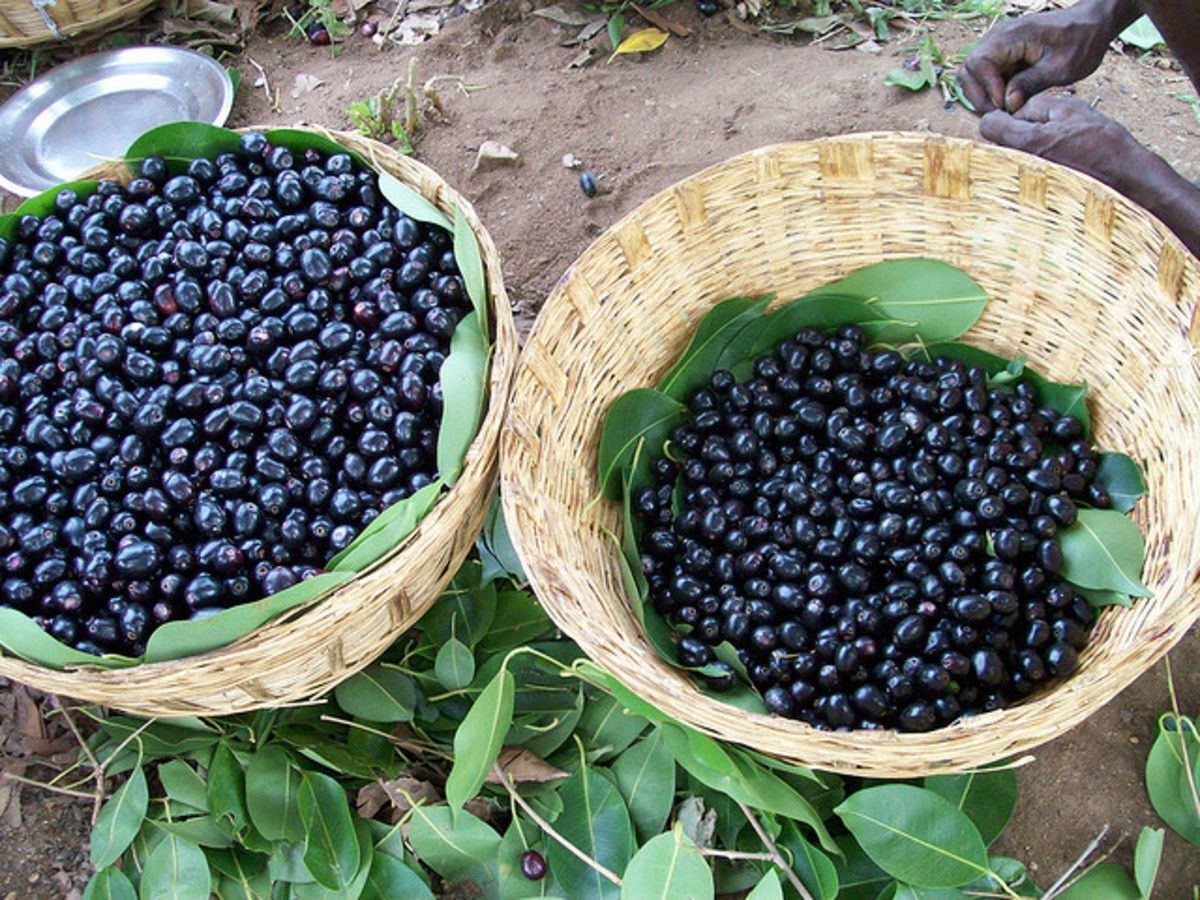
Jambul, also known as Java plum or black plum, is a tropical fruit that often flies under the radar. This small, purplish-black fruit packs a punch with its unique flavor and numerous health benefits. Originating from the Indian subcontinent, jambul has made its way into various cuisines and traditional medicines. But what makes this fruit so special? Jambul is not just a tasty treat; it’s a powerhouse of nutrients. From aiding digestion to controlling blood sugar levels, this fruit has a lot to offer. Ready to learn more about this underrated gem? Let’s dive into 20 fascinating facts about jambul that will leave you craving a taste!
Key Takeaways:
- Jambul, also known as Java plum, is a tropical fruit packed with vitamin C and fiber, making it a healthy and low-calorie option for boosting immunity and aiding digestion.
- Beyond its delicious taste, jambul offers health benefits like regulating blood sugar, improving heart health, and enhancing skin health, making it a valuable addition to your diet.
What is Jambul?
Jambul, also known as Java plum or black plum, is a tropical fruit native to the Indian subcontinent. This fruit, scientifically named Syzygium cumini, is cherished for its unique taste and numerous health benefits. Let's dive into some fascinating facts about this lesser-known fruit.
Nutritional Value of Jambul
Jambul is packed with essential nutrients that make it a healthy addition to your diet. Here are some key nutritional facts:
- Rich in Vitamin C: Jambul contains a high amount of vitamin C, which helps boost the immune system and promotes healthy skin.
- High in Fiber: The fruit is an excellent source of dietary fiber, aiding digestion and preventing constipation.
- Low in Calories: With only about 60 calories per 100 grams, jambul is a great option for those watching their calorie intake.
- Contains Antioxidants: Jambul is rich in antioxidants, which help fight free radicals and reduce the risk of chronic diseases.
Health Benefits of Jambul
Beyond its nutritional value, jambul offers several health benefits that make it a valuable fruit. Here are some of them:
- Regulates Blood Sugar: Jambul has properties that help regulate blood sugar levels, making it beneficial for diabetics.
- Improves Heart Health: The fruit's high antioxidant content helps improve heart health by reducing oxidative stress and inflammation.
- Boosts Immunity: The vitamin C in jambul strengthens the immune system, helping the body fight off infections.
- Enhances Skin Health: Antioxidants and vitamins in jambul promote healthy, glowing skin by reducing signs of aging and protecting against UV damage.
Culinary Uses of Jambul
Jambul is not only nutritious but also versatile in the kitchen. Here are some ways to enjoy this fruit:
- Fresh Consumption: The simplest way to enjoy jambul is to eat it fresh. Its sweet and slightly tangy flavor is refreshing.
- Jams and Jellies: Jambul can be used to make delicious jams and jellies, perfect for spreading on toast or adding to desserts.
- Juices and Smoothies: Blend jambul into juices or smoothies for a nutritious and tasty drink.
- Salads: Add jambul to fruit salads for a burst of flavor and color.
Cultural Significance of Jambul
Jambul holds a special place in various cultures, particularly in India. Here are some interesting cultural facts:
- Religious Significance: In Hindu mythology, jambul is associated with Lord Krishna and is often offered in religious ceremonies.
- Traditional Medicine: Jambul has been used in Ayurvedic medicine for centuries to treat various ailments, including diabetes and digestive issues.
- Festivals: The fruit is celebrated in various festivals, particularly in regions where it is grown abundantly.
Growing Jambul
Interested in growing your own jambul tree? Here are some facts about its cultivation:
- Climate Requirements: Jambul trees thrive in tropical and subtropical climates, requiring plenty of sunlight and moderate rainfall.
- Soil Preferences: The tree prefers well-drained, loamy soil but can adapt to various soil types.
- Propagation: Jambul trees can be propagated from seeds or cuttings, with seeds being the most common method.
- Harvesting: The fruit is typically harvested in the summer months when it is fully ripe and has a deep purple color.
Fun Facts About Jambul
Let's wrap up with some fun and quirky facts about jambul:
- Color-Changing Fruit: Jambul changes color as it ripens, starting from green to pink, then to dark purple or black when fully ripe.
The Final Scoop on Jambul
Jambul, also known as Java plum, packs a punch with its unique flavor and impressive health benefits. This tropical fruit, native to India and Southeast Asia, is rich in antioxidants, vitamins, and minerals. It helps manage blood sugar levels, supports heart health, and boosts immunity. Jambul trees are not just about the fruit; their leaves, seeds, and bark have medicinal properties too. The fruit's deep purple color comes from anthocyanins, which have anti-inflammatory effects. Whether eaten fresh, made into jams, or used in traditional medicine, jambul offers a versatile addition to your diet. Its cultural significance in various regions highlights its importance beyond just nutrition. So, next time you spot jambul at the market, grab some and enjoy the benefits of this remarkable fruit.
Frequently Asked Questions
Was this page helpful?
Our commitment to delivering trustworthy and engaging content is at the heart of what we do. Each fact on our site is contributed by real users like you, bringing a wealth of diverse insights and information. To ensure the highest standards of accuracy and reliability, our dedicated editors meticulously review each submission. This process guarantees that the facts we share are not only fascinating but also credible. Trust in our commitment to quality and authenticity as you explore and learn with us.


